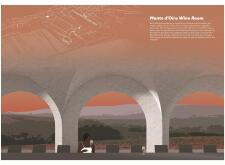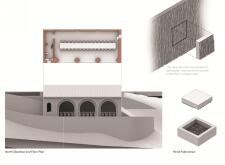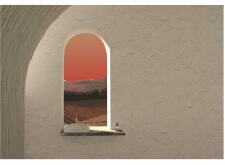5 key facts about this project
At the heart of this project is a clear architectural concept that resonates with the surrounding environment. The use of local materials integrates the building within its geographical context, creating a dialogue with the landscape, climate, and cultural heritage of the area. The selection of materials—such as concrete, glass, wood, and metal—has been made with intention, considering not only the structural integrity but also the sustainable aspects of design. These materials contribute not only to the durability of the project but also to its visual narrative, reflecting a balance between modernity and tradition.
The design outcomes of the project illustrate a thoughtful approach to space planning. Interior spaces are designed with functionality in mind, promoting flow and connection among different areas. The careful arrangement of rooms allows for accessibility and natural light, enhancing the overall user experience. Precise attention has been paid to the orientation of windows and the incorporation of outdoor spaces, which expand the usable area and foster a connection with nature. Unique design elements—such as overhangs, terraces, or green roofs—serve a dual purpose: they contribute to energy efficiency while also offering inviting spaces for occupants.
Additionally, the project showcases innovative architectural ideas that reflect a modern sensibility. The integration of technology in the building design, whether through smart systems for energy management or advanced materials for insulation, underlines a commitment to sustainability and the future of living environments. These design approaches not only meet current codes and standards but exceed expectations by providing solutions that are adaptable to changing needs over time.
In the exterior treatment of the building, the integration of landscaping features mirrors the principles of biophilic design. The use of native plants creates a harmonious balance with the architecture, ensuring that the project respects and enhances its natural surroundings. Water features or natural shading elements are also skillfully incorporated, promoting a sustainable ecosystem that can thrive in tandem with human habitation.
As we explore this architectural project further, it becomes clear that the design choices reflect a commitment to enhancing community interaction and well-being. The incorporation of communal spaces encourages socialization and interaction among users, which is an essential aspect of contemporary architectural philosophy. Furthermore, the balance between private areas and shared spaces demonstrates a nuanced understanding of the social dynamics within communities.
For a more in-depth understanding of the architectural plans, sections, designs, and ideas that shaped this project, readers are encouraged to delve into the comprehensive project presentation. This exploration will yield greater insights into the intricate details and thoughtful considerations that make this architectural endeavor noteworthy.


























